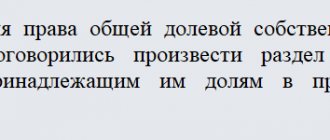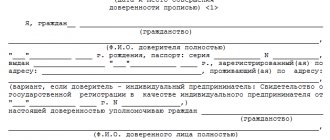The main purpose of a gratuitous use agreement, or a loan agreement, is to guarantee the return of property transferred for temporary use. In fact, such an agreement is used every day, but the everyday form is an oral agreement, while legal entities formalize transactions according to all the rules.
Unlike, for example, a lease agreement, a loan agreement does not imply the extraction of profit, but defines the conditions for using what is received, limiting the borrower to the prescribed conditions.
A striking example of concluding such an agreement is an agreement between a library and a reader, which, in accordance with N 78-FZ “On Librarianship,” gives citizens the right to receive for temporary use any document from library collections for free.
It is difficult to imagine how neighbors, lending a food processor to each other, sign an agreement, despite the fact that this is a special case of an agreement for free use. But to imagine that a commercial organization transferred a large non-residential property without legal registration and support, even if doing it for charitable purposes, is even more difficult.
What is a free use agreement?
An agreement for gratuitous use, or a loan agreement, is an agreement on the transfer of property for temporary use without the purpose of making a profit, the main features of which are:
- Fact of transfer;
- Absence of counter-obligations from the transferring party;
- Mandatory indication of the fact of free use.
The consensual nature of the transaction provided for by the Civil Code of the Russian Federation does not exclude the real form of the contract, but this is not regulated by law in any way, which allows the participants to determine for themselves exactly how the transaction will be formalized and whether notarization is necessary.
It is worth considering that an oral agreement does not have legal force, which means the consequences can be unpredictable. And in the event of a negative outcome, it will be difficult for the parties to defend their position in the courts.
Nevertheless, judicial practice even in the case of an oral agreement is on the “correct” side if the terms are confirmed by testimony. But the human factor begins to play a decisive role, and it is more difficult for the court to establish the truth.
There are no legislative restrictions on the terms; the document can be either unlimited and terminated at any time at the initiative of one of the parties, or with terms specified by the parties. In the first case, the minimum period for notice of termination is considered to be a month.
The main limitation prescribed by law for such transactions is the indication of characteristic data - a complete description of the object with all defects and restrictions, otherwise the transaction is considered void according to
.
The loan agreement may give the borrower the right to use:
- Residential or non-residential premises;
- Vehicle;
- Equipment;
- Land plot;
- State and municipal property.
Transfer of an item under a loan agreement
Items under a free use agreement must be transferred in proper condition, with all necessary documents and accessories. The consequences of transferring things without accessories and documents, if without them the thing cannot be used, entail the right of the recipient to demand the provision of these accessories and documents or termination of the contract and reimbursement of expenses incurred.
If there is a refusal to transfer an item after concluding a contract for gratuitous use, the recipient also has the right to demand termination of the contract and compensation for expenses incurred.
If defects in items are discovered, the recipient has the right to demand:
- free elimination of deficiencies;
- reimbursement of expenses for eliminating deficiencies;
- early termination of the contract and compensation for real damage incurred by it: actual costs and losses.
If the lender refuses to return the item, he submits: A statement of claim to recover property from illegal possession.
Lender and borrower in a gratuitous use agreement
The norms prescribed by law establish two parties as subjects of the agreement: the lender and the borrower, each of which has its own pool of rights and obligations.
The lender is either the owner himself or his authorized persons, both individuals and legal entities. In addition, state and municipal bodies and enterprises with the right of disposal act as lenders.
The lender has the right:
- Demand termination of the transaction and compensation for losses;
- Alienate a thing or transfer it for paid use to third parties;
- Terminate the transaction in cases where the borrower damages property or violates the terms of the agreement.
Borrower is a person who has received property for free use. The borrower cannot be the owners of a commercial organization if it acts as a lender.
The borrower has the right to:
- Receipt of property by agreement;
- Termination of the transaction and compensation for losses caused;
- Free defect elimination;
- Reimbursement of expenses;
- Early termination and compensation for damages if: Defects previously unknown are discovered;
- The property is unsuitable for use due to reasons independent of the borrower;
- The property was not transferred.
The borrower is responsible for the property if it:
- Was not used for its intended purpose;
- Transferred to a third party without consent;
- Subject to circumstances in which the borrower chose to retain his property rather than the transferred property.
Pros and cons of transferring real estate for free use
Are there any disadvantages to executing such a transaction?
An indisputable advantage for the borrower is, of course, that he uses the real estate for free. But this does not relieve him from fulfilling a number of obligations. We will talk about them below.
It is permissible for both citizens and commercial enterprises and organizations to rent real estate free of charge.
The main points of such an agreement are similar to those of the lease agreement, with the exception of payment.
We'll look at them next. Let's start with the term of the contract. It must be defined. If this moment is missed, the period will be considered indefinite.
Use of property. The borrower has obligations to use the property based on the conditions specified in the agreement, as well as the purpose of the property.
If this does not happen, the lender has every right to demand that the contract be terminated and the losses be compensated.
Preemption clause. If the use of the property by the borrower continues after the agreement has expired, then the agreement is renewed. Provided that the lender does not object. Its duration is considered indefinite. The conditions remain the same.
Property Improvement Clause.
If the agreement does not provide for other clauses, then those improvements to the housing that the borrower has made are his property. They must be separable.
If improvements that are inseparable are made by the borrower and are not agreed upon with the lender, then you should not count on reimbursement of their cost.
Expert lawyer's opinion
Expert opinion
Gumenyuk Ekaterina Vladimirovna
Rosreestr - worked as a state registrar of rights. Head of the property department. I help solve problems that arise with real estate.
Ask a Question
The clause on inseparable improvements is very important in any agreement for the use of premises. A situation may arise when the borrower, for example, installs plastic windows, changes plumbing or electrical wiring. In any case, he is obliged to notify the lender in writing about the proposed changes, indicating the planned amount that the user wants to spend on repairs and the types of work expected to be performed.
The right to free use of real estate
In the case of real estate, such a right is the ability to enter into an agreement free of charge for the purpose of using the transferred property. Despite the fact that such an agreement may be oral, the participation of a legal entity in it automatically leads to the written form of the transaction.
It is not necessary to register such an agreement due to the fact that no property rights arise for the borrower, which is clearly explained in the federal law “On State Registration of Real Estate”. However, there are exceptions, which are:
- Objects of cultural heritage;
- Land plots, if the agreement term is more than a year.
The object of the agreement is transferred in the condition agreed upon by the parties, and its maintenance and repair work are the responsibility of the borrower. In addition to the object itself, additional documentation may be transferred, unless otherwise provided by the agreed conditions, which is regulated
.
Speaking about cultural heritage objects, it is worth mentioning that any changes made may negatively affect not only the relations of the parties, but also have consequences on the part of the controlling organizations responsible for preserving the cultural value of the object.
In the case of land plots, there are also nuances, taking into account such factors as the category of land use. Building a house on an agricultural plot will not work, in fact, in the same way as sowing a crop on a residential plot.
In any such violation, the owner will be primarily to blame, who will have to prove that unlawful actions that entailed liability before the law were carried out by the borrower. Insurance can be provided by clearly stated conditions.
Upon termination of the agreement, the property must be returned in the same form, and any changes must be agreed upon with the owner in advance and preferably certified by additional agreements.
Procedure for transfer of property
Even if the transaction does not involve any particular difficulties in regulating relations with the borrower, it is recommended to draw up an agreement. in which to record agreements that relate to the transfer of property. The conclusion of an agreement will protect you from omissions and claims, knowingly defining the legal framework for the relationship.
For a document to be valid, it is necessary to ensure that all essential points are specified in its paragraphs. Otherwise, the interested party will be able to invalidate it.
The signing of a gratuitous transfer agreement is accompanied by actual actions upon the fact, with the event reflected in the acceptance certificate, indicating the start date of use and a description of the condition of the object (defects, identified features).
How to draw up an agreement for the gratuitous transfer of property for use
An agreement for the transfer of property for temporary use has much in common with the clauses of a lease agreement, with the exception of the main thing - the borrower does not pay any remuneration for the acquired right. This means that the owner has no right to expect payment, provision of services, or provision of other valuables in return for what was transferred. Entrepreneurs who find it beneficial to secure a free right to use real estate or other objects are of particular interest in such registration options.
Download: Agreement for free use of property (sample) (21.9 KiB, 1,017 hits)
Sample agreement for the gratuitous transfer of real estate (29.4 KiB, 648 hits)
Sample donation agreement (16.3 KiB, 249 hits)
Standard form and example of a contract for the gratuitous transfer of property (50.0 KiB, 762 hits)
You should not ignore the recommendations of the law to record oral agreements in writing in order to avoid unpleasant consequences with unscrupulous borrowers or claims from government agencies.
The bilateral document must include the following items:
- An exact description of the subject of the transaction: address, cadastral number, technical characteristics, features of the object.
- It is not necessary to reflect the rights and obligations in the document, however, these clauses will ensure the protection of the interests of the borrower and the lender to an equal extent. For example, the owner of an object undertakes to give it for use for a certain period of time, and the borrower must take care of the safety and payment of maintenance bills.
- Indication of the parties to the transaction, which will help identify the participants if any claims or questions arise.
The parties may voluntarily include other additional terms based on individual circumstances, excluding the right to any form of remuneration.
Additional documents
Together with the bilateral agreement, the parties sign an acceptance certificate reflecting the fulfillment of agreements and recording the condition of the object at the time of acceptance for use. The more detailed the situation is described, the higher the chances of a successful resolution of issues if one of the parties to the transaction has them.
Unlike lease and other paid forms of transfer of property, drawing up a receipt from the lender is not provided, since payment is not allowed.
Grounds for termination
If any of the parties decides to terminate the contract before its expiration, it is necessary to be guided by Article 698 of the Civil Code of the Russian Federation.
The grounds for unilateral early termination of use may be:
- An action or inaction of the borrower that led to a deterioration in the condition of the property.
- Refusal to pay current expenses associated with the use of property.
- Violation of the intended purpose of the object, when the borrower decided to use the property in a manner inconsistent with the current restrictions.
- The emergence of third parties claiming to use the object transferred to the borrower.
The law does not prohibit parties to a transaction from terminating agreements by mutual agreement. But sometimes the initiative comes solely from the borrower. This happens if:
- during use, defects were discovered that make the property unsuitable for meeting the specific needs of the borrower, and there is evidence that the lender was silent about the existence of problems;
- force majeure circumstances have arisen due to which the borrower is not to blame for the impossibility of using the property in his own interests;
- persons appeared claiming to own property previously transferred free of charge by the lender.
The basis for considering the contract terminated at the initiative of the borrower may be the owner’s dishonest attitude towards the obligations of providing documentation for the facility, including the acceptance certificate.
The right to free use of movable property
The right in question does not differ much from the previous one, except that it is more accessible to individuals and easier to register, because In this case, there are much fewer legal documents.
According to
a person authorized by the owner on behalf of a unitary enterprise has the right to conclude a loan agreement for movable property without the consent of the owner. Budgetary and autonomous institutions are allowed to dispose of special valuable movable property with the consent of the owner. In this case, the consent must be properly executed and notarized.
The document specifies the characteristic features and condition, so for a vehicle, for example, these will be:
- Technical certificate;
- Model data;
- Register sign;
- Mileage;
- Diagnostic report if necessary.
As in the previous case, such an agreement is not subject to registration, because no property rights are transferred to the borrower. A special and frequent case of a transaction can be considered a power of attorney to drive a vehicle, which is filled out by hand and has no special requirements.
Responsibilities for maintaining the item by the borrower
In general, the borrower is obliged to maintain the received item in good condition and bear all costs of its maintenance. In this case, the borrower is responsible for both current and major repairs. These rules apply unless the parties to the contract have determined a different order of contents of the thing.
The risk of accidental loss or accidental damage to property rests with the owner. However, the borrower bears this risk if:
- the thing was lost or damaged due to its use by the borrower not in accordance with the agreement or the purpose of the thing;
- the borrower transferred it to a third party without the consent of the lender (if there was consent, this risk is borne by the lender);
- the borrower, under the circumstances, could have prevented the death or damage of the item by sacrificing his own, but did not do so.
The listed cases are determined on the basis of the borrower’s obligation to take care of the safety of the property received for use and to maintain integrity in the relationship between the parties.






